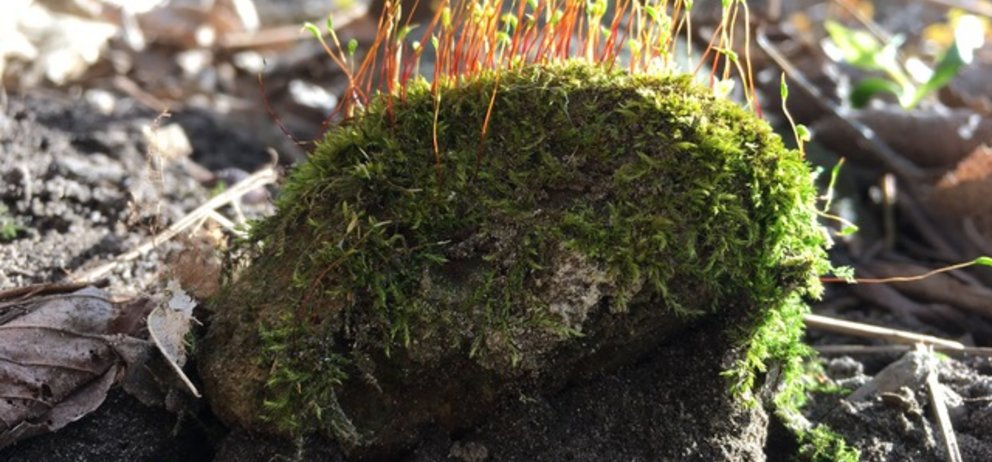As an artist, you've been associated with HAU Hebbel am Ufer for a number of years. Among the works you've presented here are “Körper ohne Macht” (“Bodies Without Power”) (2015), “Yew” (2018) and “The Nature of Us” 2019. “Yew” and “The Nature of Us” were made in collaboration with Jared Gradinger. “Mossbelly” is your latest work, which will premiere in the HAU2 studio in an immersive setting that almost envelops the audience. What's the story behind it?
For years, I have been working with many different forms of consciousness. I'm especially interested in working with forms of plant consciousness, with which I also collaborate artistically. Working with plants has subtly led to an aversion to artificial light, so my work has mostly taken place outdoors or in daylight. Now, with “Mossbelly”, I wanted to create a piece with stripped-down, focussed choreography, and I didn't want it to take place in a black box but in daylight instead. The HAU2 studio is perfect for this, with its big window facade jutting into the treetops. With help from David Hermann, we have designed a space there that allows the audience to become part of the bodyscape themselves, so that they can get very close to the moss.
How did you develop the movement material for “Mossbelly”?
We developed the movement material through in-depth encounters with the moss, especially through the practice of trituration. The hour-long process of triturating a plant was passed on to me by Shelley Etkin, who in turn received it from Aune Kallinen. From here, I developed a hybrid practice of trituration and movement research in continuous dialogue and shared practice with Shelley Etkin.
So for “Mossbelly” we did movement research directly within the sphere of the plant, inviting moss to incarnate through our bodies, to move us, to dream us.
Moss's love of water and of ancestors then created this perpetual rain through our bodies, which I wanted to give back to moss through our dance. Moss has a vital quality that is constantly located in the now, but at the same time, it has this ancient dragon energy – meaning energy that can be traced back to the beginning of all time. From a choreographic point of view, I find that very appealing. So with “Mossbelly”, we are trying to honour the pulsating now with a deep line into the past.
What is it about moss, of all plants? I mean, why such a deep preoccupation with moss in particular?
Moss is the first plant that went from water to land. It was overwhelming for me to encounter an energy of “we're going, even if we don't know where”, a force of huge departure. Such unbelievable potential for change lies in this plant. And yet moss does not show us the way, or a clear evolution. There's something that remains mysterious to us – this quantum leap. This is something that also inspires me in regards to life in other systems in this world.
With moss, I encountered a plant that has utopian knowledge to share about a non-aggressive expansion and a sustainable life in intermediate spaces, teaching us to give space to others and to be the soil for others. The relationship of moss to water and the transition from water to land brings us back to our beginnings and our superhuman ancestors.
Moss has this quality of “come closer!”, and somehow I couldn't let go of that relationship. It pulled me in, deeper and deeper, or further and further. After all, the depth in the surface is in the moss.
You have recently changed your name. This also has something to do with an encounter you had during a trituration. Would you like to tell us more about this?
In October 2020, during the trituration of the oak tree, I felt a presence in the room. And deep from within me emerged the certainty that it was my grandfather's energy. My mother and I never met him. His name was Leopold Vitovec. Never in my life had I felt a sense of contact with a dead person, but this was strong, and there was no doubt about it. My grandmother was pregnant with my mother when my grandfather, a German soldier on the Russian front, couldn't stand it anymore and shot himself in the hand. He was denounced by his comrades and sent to a German camp for war crimes. My grandmother's family then urged my grandmother to leave her husband, which she did.
When I met the oak tree, I felt my grandfather very strongly through it. I felt his nature, his cheerful and funny manner. His sensitivity. How tall he was. A little melancholic, but he loved life and laughter. A really warm energy. And I also felt that he wasn't revealing himself just for me. That was a strange feeling. I then realised that I was pregnant and that this presence was appearing for the being growing in my belly, aligning himself to back it up from behind. Now I know that it is typical of the oak tree to connect one with the lost members of one's nearest human family tree. I wanted to honour my forgotten grandfather by taking his surname: Vitovec.
What are the five most important influences for “Mossbelly”?
It's absurd, but I always try not to get too much inspiration from other people. Especially when I try to get in touch with plants and work with them. So, I don't have much to say on this note. But, for example, I do have three copies of “Gathering Moss” by Robin Wall Kimmerer at home, a book that friends have given to me as a gift. And I look forward to reading it when I take a break with my own process with the moss. I didn't feel any need to read it while working on this. I love to maintain a certain naivety and not to fill my frontal lobes with more human voices.
